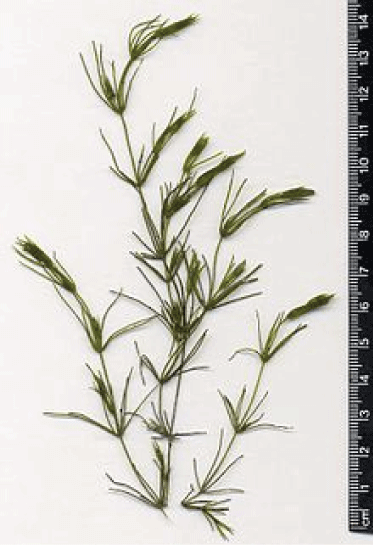Chara AlgaeChara Algae belongs to the green algae group, and it is a genus of charophytes that belongs to the family Characeae. Since species belonging to the Chara Algae genus come under the green algae group, they all will have some common green algae characteristics like their appearance, habitats, etc. Chara algae resemble land plants because they have leaf-like and stem-like structures, and moreover, they are multicellular organisms. 
Chara Algae are found in an aquatic environment, but they prefer hard and less oxygenated water, and they are found in freshwater environments. Chara algae group is particularly present throughout the northern temperate zone (in the limestone areas), and they are not found in the water habitat where mosquito larvae are present. Chara Algae grow submerged in the freshwater & attached to the muddy bottom, and they are covered with calcium carbonate deposits. These calcium carbonate deposits that cover the chara algae are commonly known as Stonewort, and they are found deep inside the water. Here are complete details about Chara Algae, such as details regarding their morphology and distribution. Introduction to Chara AlgaeChara algae, the common name for a genus of charophytes, belongs to the family Characeae of the green algae group. Following is the orderly scientific classification of the chara algae species:
Many species belonging to Cyanobacteria or the Blue-green algae group have been found growing on the surface of chara algae in the form of epiphytes. These blue-green algae are depicted to be involved in fixing nitrogen which is important for the nutrition of Chara algae or host plants. Chara Algae: MorphologyThe plant body of Chara algae species is a form of gametophyte which consists of the following parts (along with their description):
Chara Algae: ReproductionChara algae species follow the same reproduction pattern, common among green algae groups, which means they can reproduce both asexually and sexually. Asexual reproduction occurs in chara algae through vegetative reproduction. Vegetative reproduction in chara algae takes place by the secondary protonemata, amylum stars, and tubers part. Globule or antheridium (which is generally jacketed and multicellular) are the male sex organs in chara algae, whereas nucule or archegonium is the female sex organs. The sex organ formation of the chara algae such as antheridia and archegonia can occur in the following forms:
The zygote develops into an oospore after fertilization takes place in chara algae. Chara Algae: StructureThe branching system of the chara alga's body is very complex because the branches of them are derived from the apical cells and these apical cells cut off a segment at the base to form nodal and internodal cells alternatively in the alga body (at the base of branching structure). The branching system of chara algae, by means of rhizoids, is mainly Anchored through underground branching. Chara algae give a rough feel on touch because of the deposits of the calcium chloride in their outer cell walls. The metabolic process of chara algae plants is often associated with these deposits of calcium salts which also gives them a smell of hydrogen sulfide (distinctive and unpleasant smell).
Next TopicAlgae Examples
|
 For Videos Join Our Youtube Channel: Join Now
For Videos Join Our Youtube Channel: Join Now
Feedback
- Send your Feedback to [email protected]
Help Others, Please Share









